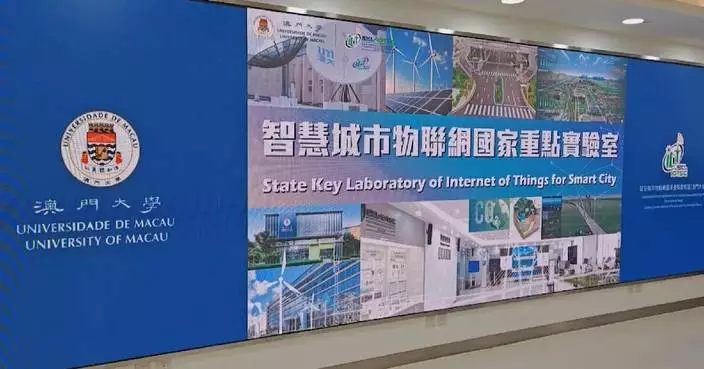China's first domestically developed Internet of Things (IoT) operating system for power facilities, built on open source, has significantly improved the efficiency of energy use by enabling intelligent interconnection and data sharing among various types of power equipment.
By offering a universal "language" across diverse types of power equipment, the open-source system facilitates interaction among all types of equipment connected within the system, including electric vehicles, charging stations, power storage units, intelligent power meters, and home appliances.
According to Xu Jian, general manager of China Southern Power Grid Digital Grid Technology (Guangdong) Co., Ltd., the information exchange between charging piles and the power grid can greatly lower access and maintenance expenses while enhancing electricity utilization efficiency.
For instance, users can conveniently opt to charge their vehicles during periods of low electricity prices using this system, Xu said.
To date, the system has attracted 350 manufacturers from relevant industrial chains to join it, with over 800 terminals having begun the adaptation process, he noted.
"Computing by the unified connection data standards, we estimate that costs have gone down by roughly 60 to 70 percent, while efficiency is now roughly five to 10 times higher," Xu said.
The convenient and cost-effective characteristics of open-source software have prompted emerging economies around the world to invest heavily in the development of open-source ecology.
According to a report by the China Academy of Information and Communications Technology, global open source software projects are growing steadily, with the total volume exceeding 400 million.
Among the top 100 open source software projects in terms of global activity, China's open source software projects account for 17 percent, ranking the second.

Open-source IoT operating system for power facilities improves efficiency of energy use
Hengqin Island, located just across China's Macao Special Administrative Region (SAR), has undergone tremendous changes over the past few decades, bringing enormous development opportunities to young people in Macao and the mainland, said Leong Ka-seng, a 32-year-old entrepreneur from Macao.
Born and raised in Macao, Leong chose to work and start a business in Hengqin nine years ago. Today, he runs two restaurants and a decoration company in Hengqin. At the age of 32, he has become an experienced entrepreneur with both failures and successes.
"I came to Hengqin for development in 2015, and officially moved there to live and start a business in 2018. Macao is where I grew up and where I have taken root, but I think Hengqin may be the place where I can blossom and yield fruit," Leong said.
Hengqin is located at the southern end of Zhuhai, south China's Guangdong Province, and is adjacent to Macao by bridge and sea. To travel between Macao and Hengqin, Leong needs to go through the Hengqin Port.
"In the past, the Dahengqin Mountain was over there, and the Xiaohengqin Mountain was on the other side, with a vast ocean in between. The land we see may have been sea at the time. After the West Dike and the East Dike near Macao were built, land reclamation work began when there was not so much water area. This is the place known as the central sulcus," Leong introduced when standing on a bridge in Hengqin.
Leong's connection with Hengqin goes beyond his age as the story involves three generations of his family. In the 1970s, then Zhuhai County launched a reclamation project. In about ten years, tens of thousands of youths in Guangdong's Shunde City went to Hengqin for work, and that was when Leong's grandfather came to Hengqin.
"Decades ago, my grandfather saw the same sky, the same sea, and the same two mountains as I do. Now, I can also see the high-rise buildings. In just a few decades, Hengqin has undergone tremendous changes," Leong said.
In April 2015, the Zhuhai Hengqin New Area of the China (Guangdong) Pilot Free Trade Zone was officially launched. At that time, Leong was about to graduate from university. At a sharing session with deputies of the Macao SAR to the National People's Congress (NPC) and representatives of the Hengqin New Area, he learned about the planning and future development of Hengqin and came up with the idea of going there for development.
"In Macao, I might have chosen a few fixed directions, such as working in a bank, a government department, or a financial institution. But in Hengqin, I don't know what industry I will be in. I think I can be brave and give it a try, and there may be some unexpected results," he said.
Leong said there are both opportunities and uncertainties in Hengqin, but he saw with his own eyes the positive development of the area.
"My real feeling at that time was a mixture of confusion and hope. I didn't know how the future would be, but I went to Hengqin every day indeed, 365 days a year, starting from 2015, so it has been more than 3,000 days. I see with my eyes the changes every day and every year, which makes me feel that this place is really developing, not stagnant, but is always developing. It may slow down sometimes, but it is indeed moving forward," Leong said.

Hengqin undergoes tremendous changes over past decades: Macao entrepreneur










